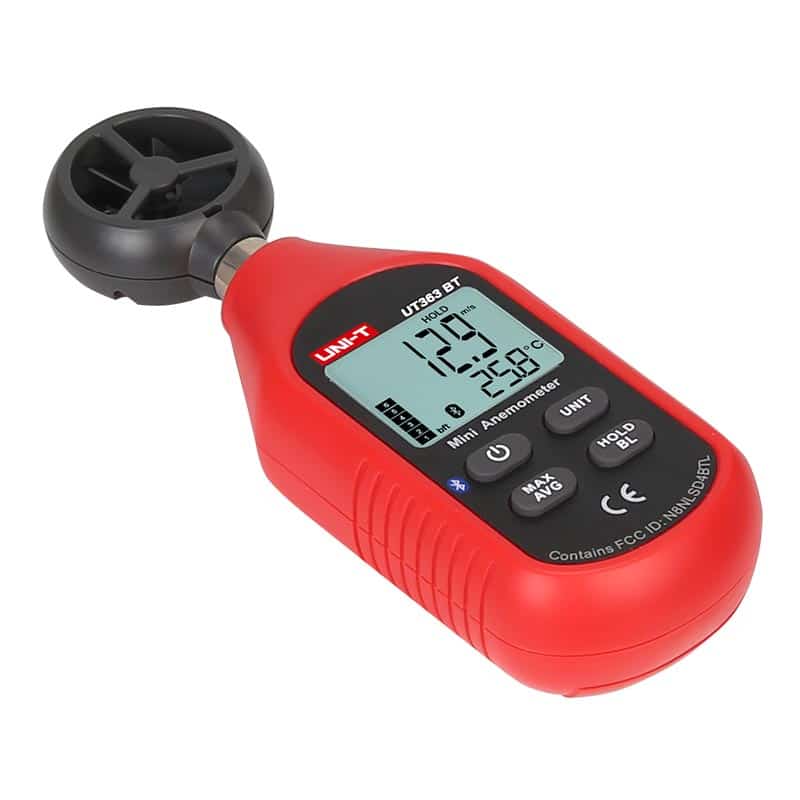Selecting the Right Anemometer: A Comprehensive Buying Overview
Selecting the Right Anemometer: A Comprehensive Buying Overview
Blog Article
All You Required to Find Out About Anemometers: Exactly How They Function, Why They Matter, and Where to Use Them
Anemometers, however commonly neglected in the realm of clinical instruments, play a crucial duty in numerous areas, providing useful insights into wind rate and air movement patterns. Recognizing the mechanics behind these devices is essential for any person seeking to harness the power of this data. From meteorologists tracking weather patterns to engineers creating frameworks with wind loads in mind, the applications of anemometers are far-ranging and varied. As we explore the complexities of anemometer modern technology, we will uncover the inner operations of these gadgets, their importance, and the key factors to consider when choosing the best anemometer for specific applications.

Anemometer Basics
An important instrument made use of to measure wind speed and direction, the anemometer plays a crucial duty in weather forecasting and numerous sectors. An anemometer generally is composed of 3 or four mugs that revolve in the wind, a vane that directs right into the wind, and sensors to track the rotations or activities.
There are various types of anemometers readily available, consisting of cup anemometers, vane anemometers, hot-wire anemometers, and sonic anemometers, each with its unique features and applications. Mug anemometers are frequently utilized for fundamental wind rate measurements, while vane anemometers are liked for directional dimensions. Hot-wire anemometers appropriate for low airspeeds, and sonic anemometers are perfect for high-precision dimensions in study and industrial settings. Recognizing the essentials of anemometers is vital for precise wind data collection and evaluation throughout different industries.
Concepts of Anemometer Operation
Structure on the fundamental understanding of anemometer fundamentals, the principles of anemometer operation illuminate the auto mechanics behind wind speed and instructions measurements. Mug anemometers, for circumstances, have three or more mugs that capture the wind, causing them to spin faster as the wind speed rises. Hot-wire anemometers rely on a warmed cord that cools down as wind passes over it, with the price of cooling identifying the wind speed.
Relevance of Anemometers
Anemometers play a crucial role in measuring wind rate and instructions, giving crucial information for climate projecting, environment research studies, environmental tracking, and aviation operations. Meteorologists count on anemometers to collect exact wind information, assisting them comprehend weather condition patterns, predict storms, and issue prompt cautions to the public. Wind farm operators make use of anemometers to analyze wind problems and maximize electricity production from wind generators.
Applications Throughout Various Industries
In the eco-friendly power field, anemometers play an important function in examining wind problems for wind ranch positionings, making certain optimum power manufacturing. Industries like building and construction and mining utilize anemometers to keep an eye on wind rates, essential for safety protocols, specifically when working at heights or in open-pit mines where solid winds can pose dangers. In farming, anemometers assist farmers in handling plant spraying by offering real-time data on wind rate to avoid drift.

Selecting the Right Anemometer for Your Demands
Picking the appropriate anemometer customized to your particular requirements is vital for acquiring Go Here accurate wind speed and instructions dimensions. When picking an anemometer, consider variables such as the designated application, needed measurement array, ecological problems, and wanted attributes. For basic purposes, a cup anemometer is suitable for measuring wind speed, while a vane anemometer offers wind direction information. Hot-wire anemometers are optimal for low airspeed measurements, and ultrasonic anemometers provide high precision and durability.

Verdict
To conclude, anemometers play a critical duty in determining wind speed and instructions across numerous sectors. Comprehending the principles of anemometer procedure is necessary for choosing the right gadget for particular needs. From weather forecasting to air travel, anemometers are crucial tools for collecting precise data and ensuring safety and security in different applications. When choosing the most ideal tool for determining wind problems., it is crucial to take into consideration the relevance of anemometers in order to make informed choices.
There are various types of anemometers readily available, including mug anemometers, vane anemometers, hot-wire anemometers, and sonic anemometers, each with its one-of-a-kind attributes and applications. Cup anemometers are frequently made use of for standard wind rate measurements, while vane anemometers are chosen for directional dimensions. Hot-wire anemometers are ideal for reduced try here airspeeds, and sonic anemometers are ideal for high-precision measurements in research study and industrial settings.Structure on the fundamental understanding of anemometer fundamentals, the concepts of anemometer procedure illuminate the auto mechanics behind wind rate and instructions measurements. For general purposes, a cup anemometer is suitable for measuring wind speed, while a vane anemometer provides wind direction data.
Report this page